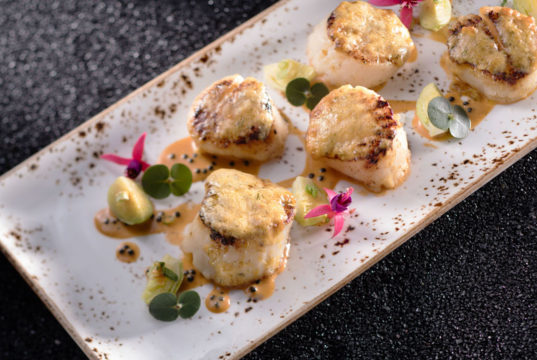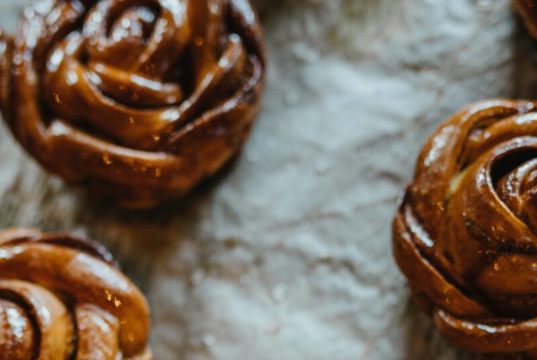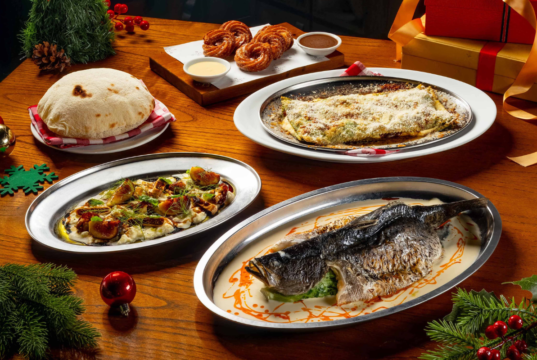As a country that has 450 different types of cheese, Italy is widely known as one of the most prominent cheese-makers in the world. We are all familiar with the well-known types such as parmesan, gorgonzola or mozzarella, but these are merely the tip of the iceberg. With centuries of history, refinement and evolution, it is nearly impossible to list every single type of cheese produced in Italy.
For the sake of simplicity and for fear of turning this section into a cheese catalogue, we will present you with a round-up of our favourite selection of Italian cheeses divided into three categories: hard cheese, soft cheese and fresh cheese.
The categories might imply texture, but we are really going with moisture level here. Hard cheeses have a lower moisture content and are generally packed into moulds under more pressure and are aged longer compared to soft cheeses, which have a higher moisture content and tend to be softer in texture as well as milder in taste. Fresh cheeses are generally not aged, or are aged for more or less one month.
Without further ado, may I present for your gastronomic pleasure, ten of our favourite Italian cheeses and their delicious properties, as well as a modest guide on wine and cheese pairing.
Hard Cheese
Parmigiano-Reggiano | Popularly known as parmesan in English, Parmigiano-Reggiano has been dubbed the king of cheese and one of Italy’s finest products. Prevailing law in its region of origin, Emilia-Romagna, dictates that this cheese can be made only between April and November so that the cows graze on fresh, verdant pastures rather than dry hay. This accounts for the cheese’s enormous and remarkably complex flavour. Parmigiano-Reggiano’s flavour also depends on its ripening stage. Ripened for 18 months, the taste is sharp and nutty, while another year or two will add a certain pureness to the taste.
Ricotta Salata | The words “ricotta salata” literally mean “re-cooked and salted”. Made from the whey part of sheep’s milk, which is pressed, salted and aged for at least 90 days, Ricotta Salata is milky white in colour with a firm texture and salty taste. The cheese is often used in salads and is ideal for slicing, crumbling and grating.
Soft Cheese
Gorgonzola | Gorgonzola is one of the world’s oldest blue-veined cheeses. The cheese is mainly produced in the northern Italian regions of Piedmont and Lombardy. Non-skimmed cow’s milk is used while preparing the cheese. Generally it takes three to four months to attain full ripeness. This cheese has a crumbly and soft texture with a nutty aroma. Gorgonzola can have a mild to sharp taste depending on its age.
Quartirolo Lombardo | The earliest historical record of this cheese dates back to the ninth century. It is produced with cow’s milk and shaped in square or rectangular bricks. It is soft, white and chalky with a slightly lumpy texture that softens as the cheese ripens. The thin and soft rind is pinkish white when young, turning a reddish grey-green as it ages. The taste of the Quartirolo Lombardo is distinctive, slightly bitter and aromatic in the fresh cheeses, which intensifies with aging. The delicate and fragrant flavour of the younger days becomes stronger and noticeably aromatic upon ripening. Quartirolo Lombardo is a typical table cheese that goes well with salads, cold dishes, fruit, walnuts and honey.
Caciocavallo | Literally meaning “cheese on horseback”, it gets its name from the manner in which the individual cheeses are always tied together in a rope and dangled over a wooden board to drain and age. The history of Caciocavallo goes back to 500 BC when Hippocrates first mentioned the cleverness of the Greeks in making it. With persistent aging, the cheese picks up intense, earthy undertones and fruity aromas. Along the way, it turns from a milky white to a darker yellow in colour and becomes more salty. The result is a cheese with profound tasting notes and perfect accompaniment to a glass of Primitivo red wine. Caciocavallo is made from pasteurized cow’s milk.
Taleggio | Made from pasteurized cow’s milk, this cheese contains 48% fat and has a strong aroma, but its taste is relatively mild with an unusual fruity tang. To make it brighter and moderate, most manufacturers add spices, raisins, nuts and sometimes lemon to it. The taste is especially highlighted when grated on salads such as radicchio and rucola, and it also melts well. Taleggio is often used to pair with Italian Nebbiolo wines, as well as a wide range of reds and whites.
Fresh Cheese
Fresh Mozzarella | Mozzarella has long been the number-one choice for many cheese-loving families for its delicate and fresh taste. It is available in many different forms and varieties, the foremost being fresh mozzarella or mozzarella fresco. This cheese has a soft, moist texture and is full of milky flavour, and is very popular as a slicing cheese on pizzas or flatbreads, snacks, salads or vegetables. It pairs well with fresh tomatoes, pesto, fruit, olives, basil and tapenades. Try the cheese with cava or other sparkling wines. Mozzarella is made from pasteurized or unpasteurized cow or buffalo’s milk.

Burrata | Meaning “buttery”, this fresh cheese is made from a mix of mozzarella and cream. The outside thin shell is a pasta filata curd made of buffalo and/or cow’s milk mozzarella while the inside contains a soft, doughy, stringy, mixture of curd and fresh cream. The cheese originated in the Apulia region of Italy known for sheep farming and agriculture. When you cut open a Burrata, it oozes with buttery and creamy panna containing scraps of mozzarella. The cream has a rich flavour and has to be eaten immediately since it is a fresh cheese. Burrata is an excellent combination for salads, crusty bread, and prosciutto, fresh tomatoes with olive oil and with spaghetti.
Mascarpone | Mascarpone is an Italian cheese from the Lombardy region, made by curdling pasteurized cow’s milk cream with citric acid or acetic acid. It is a thick, double or triple cream, soft cheese with a very high fat content ranging from 60% to 75%. The resulting rich butterfat content makes the cheese an essential ingredient in Italian recipes like Tiramisu and cheesecakes. The texture of Mascarpone ranges from smooth, creamy to buttery, depending on how it is processed during cheese-making. Used in both sweet and savoury dishes, it is added to enhance the flavour of the dish without overwhelming the original taste. The cheese tastes best with anchovies, mustard and spices, or mixed with cocoa or coffee.

Fresh Ricotta | Ricotta is an Italian fresh cheese made from sheep, cow, goat or buffalo’s milk whey left over from the production of cheese. Being low in fat and high in protein, Ricotta is a dieter’s dream cheese. The light, delicate consistency and clean flavours make it a perfect accompaniment to a variety of recipes and dishes such as lasagne, manicotti, cassata, cheesecake, calzone, pizza and ravioli, and dips. It is also suitable as a sauce thickener. Fresh Ricotta pairs great with Sauvignon Blanc.
Both cheese and wine, with their centuries-old traditions, are natural products that are frequently consumed together. Connoisseurs and cheese and wine experts alike have discovered a myriad of pairing possibilities that are delightful and intoxicating when enjoyed properly.
As a rule of thumb, the whiter and fresher the cheese the crisper and fruitier the wine should be. The great advantage of this union is that cheese and wine are both foods that can be enjoyed in their pure state, with little or no preparation, making them an ideal choice for quick snacks.
There are no hard and fast rules about which wine should be selected to accompany a particular cheese as the best selections are almost always based on individual taste. However, we’d love to share a few fundamental pointers in wine and cheese pairing that we normally adhere to in many of our successful wine dinner events.
#1 A smooth, fatty cheese may go
very well with a similarly smooth, slightly oily wine.#2 Sweet wine contrasts very well with a cheese with high acidity.
#3 White wines go better with many cheeses than reds.
#4 Not all red wines match with cheese. The most recommended are
the fruity, light red wines.#5 Dry, fresh red wines are ideally suited to soft cheeses, especially goat’s milk varieties.
#6 A wine with good acidity may be complemented by very salted cheeses.
#7 Dry champagnes are a brilliant combination with bloomy white rinds.
#8 Try regional combinations, matching cheeses and wines from
the same region.
Bearing our eight simple guidelines in mind, here are a few modest examples of what some of our favourite Italian cheeses would work well with.
The Parmigiano Reggiano, with its fruity and strong spicy note is one of the most versatile wine pairing companions. It goes well with most common types of wine, including Chardonnay, Chianti, Pinot Grigio, Pinot Noir, Merlot and Cabernet Sauvignon.
The delicate flavour of Mozzarella is perfect for lighter wines that won’t overpower it. Some of these include: Sauvignon Blanc, Merlot, Cabernet Sauvignon or Zinfandel.
Sweet and savoury triple cream cheese Mascarpone has a supple and spreadable flavour that perfectly balances with Chardonnays and other white wines.
The Riccota Salata has a supple and mild nutty taste with a sweet, milky flavour. This classic lasagne cheese is very versatile in its serving and gourmet purposes, and tastes great with wines like Sauvignon Blanc, Chardonnay, Merlot, Cabernet Sauvignon or Zinfandel




































































